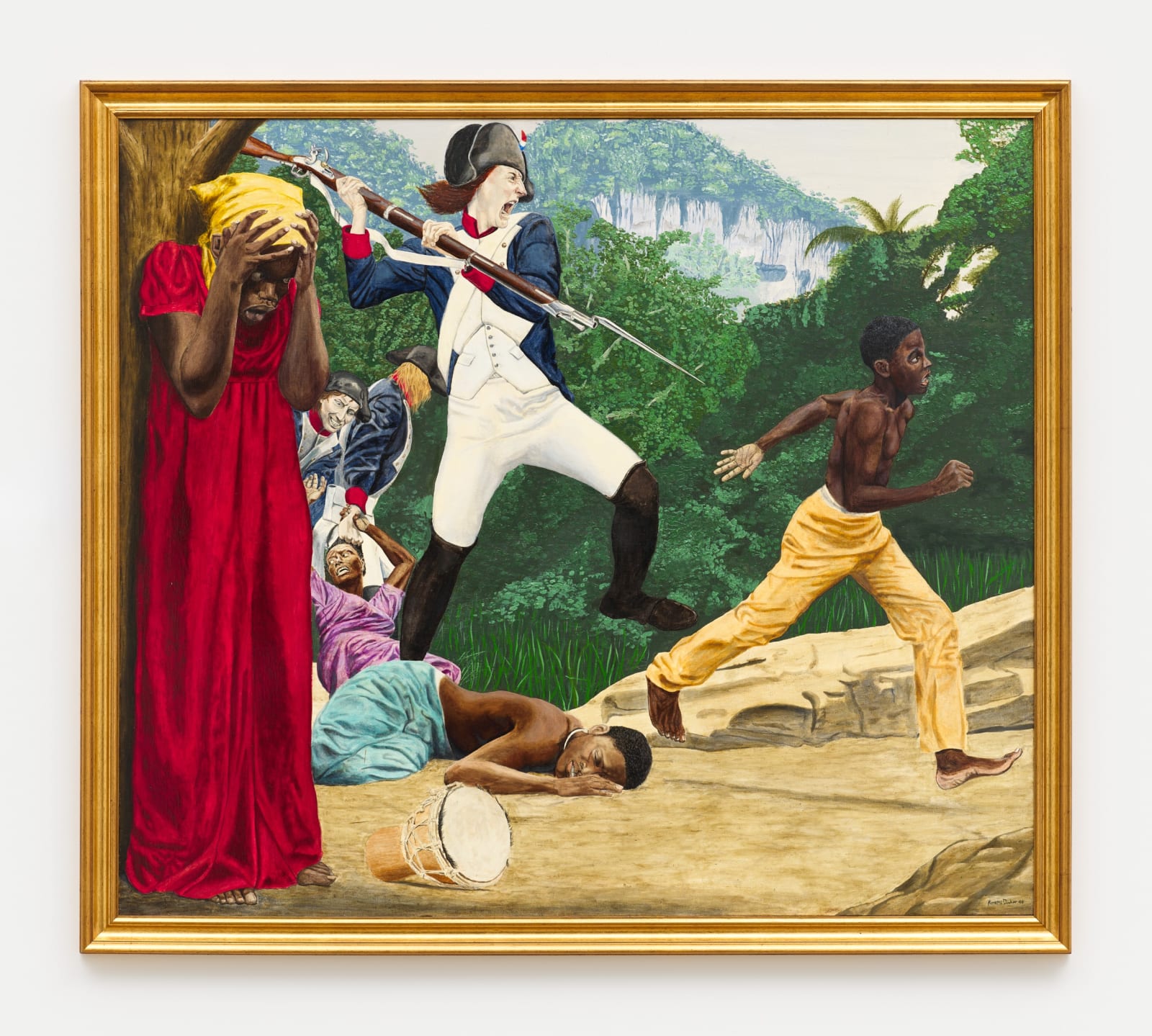
Kimathi Donkor
52 x 59 7/8 in
In 'Bacchus & Ariadne' Donkor aimed to provide a pictorial response to the orders given by the French General Charles Le Clerk, Napoleon's brother-in-law and in charge of suppressing the Haitian uprising. Le Clerk declared: "We must destroy all the mountain negroes, sparing only children under twelve years of age....I shall have to wage a war of extermination." In this painting, Donkor draws on Titian's 1523 painting 'Bacchus And Ariadne' but in a more indirect way than to the relationship between 'Toussaint L'Ouverture At Bedourete' and David's' Napoleon Crossing the Alps'. Again Donkor's painting inverts the composition of the earlier painting so that his painting might be understood as answering back or facing off the earlier work, re-asserting the presence of an erased history in defiance to one that is well-known and taught in western classics. In Titian's work the chaos of Bacchus and his followers is initially alarming to Ariadne, who looks startled on the left of the painting, but is ultimately well-meaning. However in Donkor's painting, the chaos brought by the French army is linked to their orders to wipe out the Haitians. There is no promise of safety for the figure on the right of Donkor's painting. This is a history painting that stops at the moment before the erasure of its subjects, insisting instead on bringing their presence back.
Exhibitions
'UNTITLED: Art on the conditions of our time', Kettle’s Yard, Cambridge, 2021
‘Diaspora Pavilion: Venice to Wolverhampton’ Wolverhampton Art Gallery, 2018
'Diaspora Pavilion' 57th Venice Biennale, 2017
'Caribbean Passion' Bettie Morton Gallery, London, 2004.